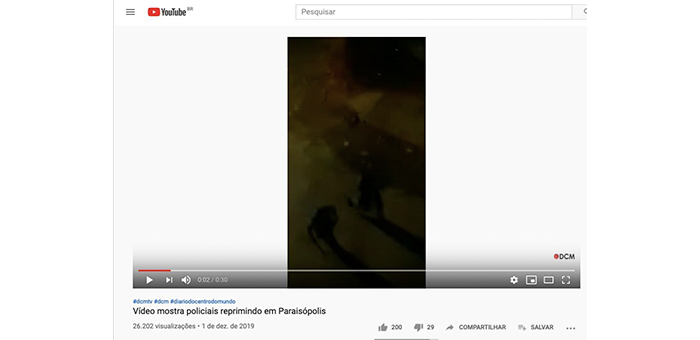Videos Force Governor to Acknowledge Police Responsibility in Massacre of Nine people in São Paulo
News agency shares WITNESS guidance to help eyewitnesses film safely
Nine people were killed and 12 others were injured during a police operation in the Paraisópolis favela in São Paulo, Brazil, on December 1st.
While state governor João Dória originally defended the police’s actions and denied any responsibility for the violence, the images captured by eyewitnesses and shared on social media have since forced him to change his story, saying three days later that he was “very shocked” by the videos and that he’s ordered a review of police protocols for the use of force.
The massacre happened when police arrived to disrupt a “baile funk” party where 5,000 people were celebrating favela funk music culture. Although the police originally claimed that local gangs were to blame for the deaths, local residents said the officers arrived with extreme violence and deliberately entrapped the people trying to flee. Horrifying videos showed police beating young people as they tried to run away, later being cornered and corralled into a narrow alleyway where some were trampled to death. The victims were between the ages of 14-23.
After the killings, investigative news agency Ponte launched a campaign focused on cellphones as a tool for self-defense, encouraging the public to share any videos of police violence — sharing WITNESS guidance on how to film safely and effectively.
The governor’s feigned “shock” is almost as outrageous as his claim that the Paraisópolis massacre was an “isolated” flaw unrelated to “routine” behavior by police. Brazilian police are among the most lethal in the world with official statistics breaking records year after year. In São Paulo, the number of those killed by police in 2019 so far is 12% higher than last year and, in Rio, official numbers show the highest number ever recorded, with 1546 people killed by police in the first 10 months of the year alone.
The majority of those killed by police are young, black residents of the country’s favelas and urban peripheries, where often the most significant presence of the state comes in the form of heavily armed police officers and military tanks, instead of schools or hospitals. When these killings happen, predominant narratives reinforce the country’s legacy of racism, and victims are often presumed guilty by default.
But video is helping change that, capturing evidence from the point of view of the community and not allowing these stories to be further misrepresented or denied. WITNESS remains committed to standing alongside the courageous activists and favela media groups that are rising up to confront and end state-sponsored violence in their communities. In the current climate of elected politicians like Bolsonaro and Witzel, we also reaffirm our commitment to fighting for the Right to Record.
Follow WITNESS Brasil on Facebook and Twitter for more on how video is helping communities expose and confront the legacy of police violence in favelas.

